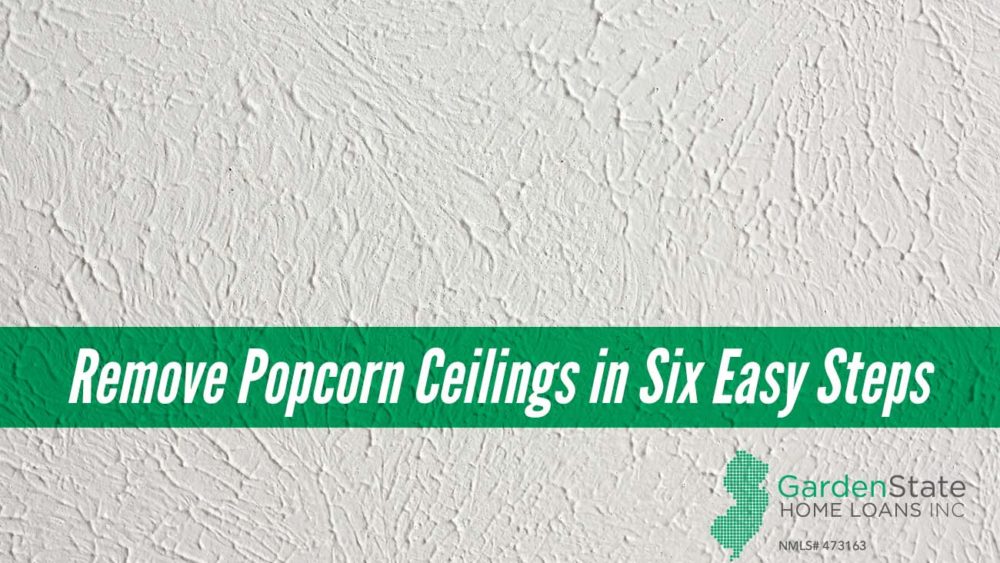Removing Popcorn Ceilings
Textured, or popcorn, ceilings went out of style years ago. However, many older (and some new) homes still feature them. Here’s how to remove the outdated style and modernize your home.
Before starting, make sure to take necessary safety precautions. If your home was built before 1980, it is possible that the material in your ceiling contains asbestos. While there’s no danger to you while it is on the ceiling, removing it can stir up the fibers and cause them to get trapped in your lungs. To test whether your ceiling texture has asbestos, use a putty knife to scrape a small amount into a plastic bag. If you are worried about safety concerns, you can hire someone to come out and take the sample for you. Send the sample to a testing service. If your material contains over 1% asbestos, you cannot remove it yourself and must have a professional service come out for you. Regardless of if asbestos is found, make sure to wear a dust mask and eye protection when removing the ceiling.
-
Prep the room
First things first, remove any furniture from the space. If you can’t do that, move it to the center of the room and cover it with plastic sheeting. Lay down a drop cloth and plastic sheeting on the floor to protect the flooring from dust and debris. Cover any wall outlets and switches with plastic and seal them with painter’s tape.
-
Spray
Mix together warm water and dishwashing soap (2-3 tablespoons per gallon) and fill a spray bottle. In small sections, about 6-8 square feet, spray the ceiling and let it sit for about 20 minutes. However, be careful not to oversaturate the popcorn coating. This could damage the underlying drywall.
-
Scrape
Using a floor scraper or other wide bladed tool, slowly remove the popcorn coating, one section at a time. If you’re having a difficult time getting the material off, spray the mixture again and wait another five minutes. Use a putty knife to remove any residual material and to get into the corners.
-
Clean up debris
Before you begin the touch-up, roll up the drop cloth and the plastic sheeting and take them outside. Shake them out over a garbage bin and then lay them down once more before starting up again.
-
Touch-up
If there are any problem areas, use a drywall knife to apply a drywall compound. Dry overnight, then lightly sand with a sanding block and wipe clean with a damp cloth.
-
Prime and paint
Using a roller with an extension attachment, prime and paint the ceilings. A tinted paint that dries white will help you know where you have already painted so you don’t miss any areas.


Comments are closed.